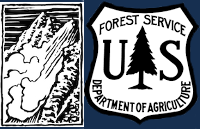Snowpack and Avalanche Discussion
<p>Large avalanches are unlikely today. The chief concern to watch for is where this week’s new snow has been blown into deeper drifts. Look for cracks shooting out in front of your skis or snowmobile as a sign that you’ve found one of these drifts where you could trigger an avalanche. The deeper the drift, the larger resulting slide would be. Even a small avalanche can be dangerous in the wrong terrain, so be very mindful of the hazards lurking below you (trees, rocks, cliffs, etc). </p>
<p>While temperatures are going to rise well above freezing today, clouds should move in before wet snow becomes much of an issue. A dusting of snow this afternoon won’t do much to affect either the riding conditions or the avalanche conditions. If precipitation does start as rain, or sunshine sticks around longer than expected, watch for the surface snow becoming wet as this means you’ll soon be able to trigger small loose wet avalanches on steep slopes. If it gets wet more than a few inches deep, move off steep slopes.</p>
<p>While unlikely, it’s also not impossible to trigger a dangerous avalanche today on deeper weak layers (<a href="https://www.youtube.com/watch?v=0w18Fxp-dmI"><strong><u>Flanders video</u></strong></a>). Cover your bases by going one at a time on steep slopes, watching your partners from a safe spot, and always carrying your avalanche rescue gear (avalanche beacon, shovel, probe).</p>
<p>The avalanche danger is LOW today.</p>
<p>If you get out, please send us your observations no matter how brief. You can submit them via our website, email (mtavalanche@gmail.com), phone (406-587-6984), or Instagram (#gnfacobs).</p>
<p> </p>
